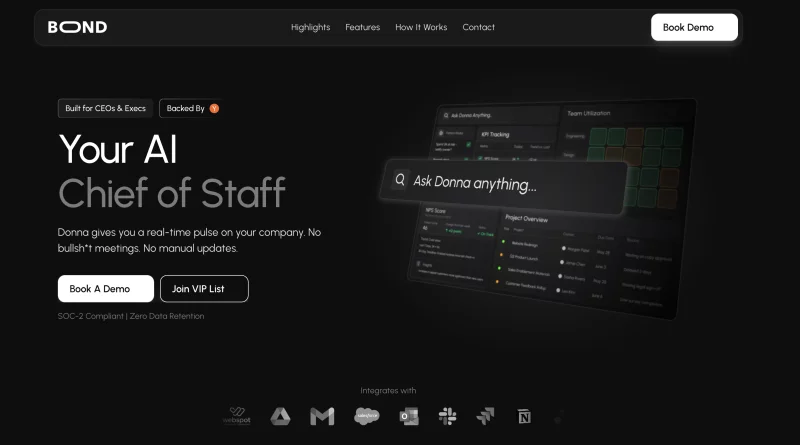Revolutionizing Software Development: The Rise of Vibe Coding with AI Tools
Introduction
In the fast-paced world of technology, artificial intelligence is redefining how we create software. A standout trend is vibe coding, a method that harnesses AI tools to generate code, making software development accessible to those without traditional coding expertise. This approach is empowering entrepreneurs and startups to turn ideas into reality with unprecedented speed, as demonstrated by Chloe Samaha and her San Francisco-based startup, BOND. For those looking to explore similar innovations, AI-Kit curates a range of AI tools to boost productivity and creativity.

Chloe Samaha’s Breakthrough with BOND
Chloe Samaha, a 21-year-old entrepreneur without formal coding training, partnered with her colleague to launch a functional version of their online productivity manager in less than a day. Using vibe coding, they leveraged AI chatbots and other AI tools to construct both the back end and front end of their product swiftly. Samaha’s partner built the back end in six hours, while she completed the front end in just 90 minutes, resulting in a working prototype.
Their product, named “Donna” after a character from the TV series Suits, acts as an AI chief of staff for CEOs and busy executives. Donna integrates data from platforms like email, calendars, and Slack, using AI to deliver instant answers about project progress and team performance. This innovative use of AI tools not only brought their vision to life but also attracted a $500,000 investment from Y Combinator. For those interested in similar solutions, explore our AI Productivity Tools category to discover tools that streamline workflows.
Understanding Vibe Coding
The term vibe coding was coined by OpenAI co-founder Andrej Karpathy in an X post earlier this year. It describes a process where developers provide high-level instructions to AI, which then generates the necessary code without requiring line-by-line scrutiny. This method shifts the focus from manual coding to overseeing functionality and user experience, trusting AI to handle the technical details.
Tom Blomfield, a group partner at Y Combinator, experienced vibe coding’s efficiency firsthand. He used it to overhaul his blog and create Recipe Ninja, a website with an AI-driven recipe generator. What would have taken a year to build traditionally—approximately 30,000 lines of code—was completed in about 100 hours with AI assistance. This example underscores how vibe coding accelerates development, making it a game-changer for creators.
Industry Perspectives on AI and Coding
Blomfield envisions a future where AI coders, project managers, and designers operate in coordinated “swarms,” potentially reducing the need for traditional coders. He suggests that AI tools could automate significant portions of software development, raising questions about the role of human developers. However, not all experts share this view, highlighting a nuanced debate about AI’s impact.
Yuhki Yamashita, chief product officer at Figma, a leading design software firm, sees AI as a catalyst for creativity. Figma recently launched an AI-enabled product that allows designers to prototype rapidly, effectively enabling them to vibe code their designs. This tool empowers designers to explore more ideas quickly, bypassing the need to hand off concepts to developers for initial prototypes. Discover more about such innovations in our AI Design Tools section.
Thomas Dohmke, CEO of GitHub, owned by Microsoft, views AI as an opportunity for developers to evolve into roles akin to conductors managing orchestras of AI coding agents. He emphasizes that AI tools enhance productivity rather than replace human expertise. For those interested in coding assistants, our AI Coding Assistants category offers tools to streamline development workflows.
Adam Resnick, a research manager at IDC, notes that while AI tools are integral to modern software development, human oversight remains essential. Most AI-generated code requires curation by experienced developers to ensure quality and functionality, suggesting that AI complements rather than supplants human skills.
The Future of Coding with AI
The rise of vibe coding and AI-assisted development is democratizing software creation, enabling startups, small businesses, and individuals to innovate without large development teams. This accessibility is particularly valuable for those with limited resources, allowing them to compete in the tech landscape.
However, the rapid adoption of AI in coding raises questions about the future. While some predict a shift toward AI-driven development, others argue that human creativity and expertise will remain vital. The balance between automation and human input is still evolving, but the potential for AI tools to enhance productivity is undeniable.
For those eager to leverage these advancements, AI-Kit provides a curated selection of AI tools for coding, design, and productivity. Whether you’re a seasoned developer or a newcomer, these tools can help you bring your ideas to life with greater efficiency.
Chloe Samaha’s success with BOND highlights the transformative power of vibe coding and AI tools in software development. By enabling rapid prototyping and deployment, these tools are reshaping how startups and creators operate. As AI continues to evolve, it promises to unlock new possibilities, making software development more inclusive and innovative. Visit AI-Kit to explore a range of AI tools that can empower your next project, from coding assistants to productivity enhancers.